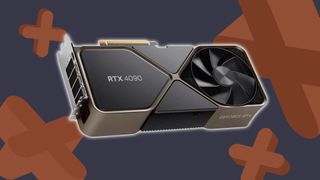
1. The Quick List
2. Best overall
3. Best for most
4. Best 4K
5. Best 1440p
6. Best 1080p
7. Best value
8. Best budget
The best graphics card can transform your PC into a powerhouse gaming machine. Whether you're looking for console-beating performance or something to tackle your Steam backlog, there are plenty of GPU options out there to suit a variety of builds. However, shopping around for the right card may feel overwhelming, so we're here to help you find the perfect component for your specific configuration.
You might be wondering what actually makes the best graphics card, especially given that there are so many out there. Typically, we look for great value GPUs that pair nicely with the best gaming PC builds, but that's just scratching the surface. These days, cards by AMD, Nvidia, and even Intel can boost fps higher than ever using AI upscaling tricks, and tools like DLSS 3 can provide a performance uplift without visual caveats. You don't have to pick up the monstrous GeForce RTX 4090 to benefit from the tech, and more games are starting to support GPU-specific settings.
Sounds pretty advanced, right? Well, and AI-powered RTX 4000 and Radeon RX 7000 GPUs cost a pretty penny. Not that everyone is immediately jumping on the new-gen bandwagon right now, as while budget friendly cards like the RTX 4060 and RX 7600 exist, last gen models still have a lot to offer in 2024. Nevertheless, acquiring a new graphics card shouldn't feel out of reach, so let's dive into some of our favorite options.
Quick list
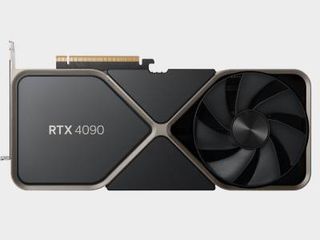
The best overall
The Nvidia RTX 4090 is redefines the idea of gaming PC performance to lofty new heights.
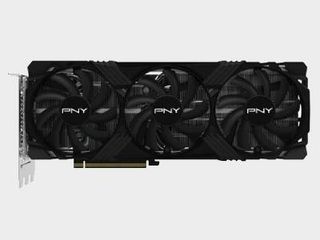
The best for most players
A sequel to the original RTX 4070 Ti, the Super version packs more VRAM than it's predecessor.
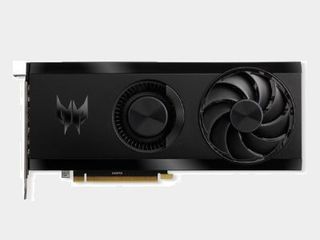
The best budget
The RX 7600 is one of the cheapest new gen GPUs right now, and it provides a nifty 1080p experience.
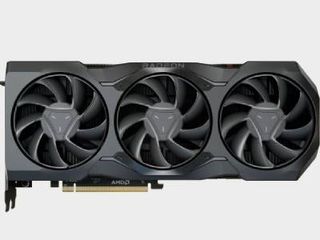
The best 4K
If you're looking for a reliable UHD experience, AMD's premium GPU has you more than covered.
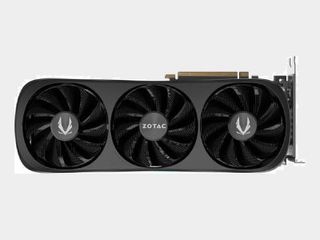
The best 1440p
A new mid-range monarch has landed, and the new Super variant is a QHD queen.
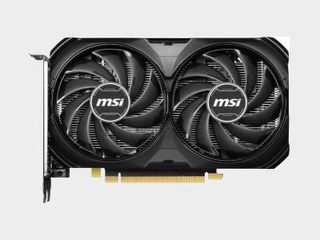
The best 1080p
The RTX 4060 is the cheapest new-gen GeForce GPU on the block, but it still packs a 1080p punch.
Load the next product ↓
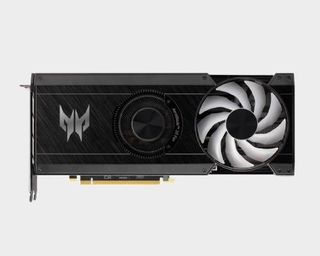
The best value
Packing 16GB VRAM and great 1440p capabilities, the Intel Arc A770 has what it takes to challenge entry-level rivals.
Read more below
The best graphics card overall
The Nvidia GeForce RTX 4090 is the most powerful graphics card ever by a country mile, and is has undoubtedly changed the standards of PC gaming. Not only does it run circles around its predecessor, the RTX 3090 Ti, but it also benefits from new AI tricks that will help keep it on the throne for even longer. That said, the card's $1,499 / £1,649 MSRP means is firmly an enthusiast option.
✅ You want raw power: Nvidia's flagship graphics card can punch much harder than anything else on the market without using upscaling tricks.
✅ You play at 4K: You won't have to think about dialing back settings to maintain UHD visuals using the 4090, making it one of the first true 4K cards.
✅ You value ray traying: Out of every GPU right now, the 4090 is the one that can handle ray tracing and still maintain high frame rates at 4K.
❌ You aren't a PC enthusiast: Other graphics cards can reach well over 100fps at 4K, and Nvidia's flagship more caters to players looking for extreme performance regardless of price.
❌ You've got a small gaming PC: The RTX 4090 is extremely chonky, and that could stop you from squeezing it into small cases with only a few GPU slots available.
Features: Thanks to a 4nm GPU, the RTX 4090 packs in 52% more graphics processing CUDA cores than the RTX 3090 Ti, and it also runs 43% faster than the RTX 3090 Ti as well — all while drawing the same amount of power as the last-gen card. Despite its hardware prowess, some of the 4090's biggest strengths are found in the software side of things, as this card launched alongside Nvidia's Frame Generation tech, which works in conjunction with DLSS to boost fps beyond the imaginable.
Design: We checked out the RTX 4090 Founder's Edition when it arrived in 2022, and it's one of the best looking versions of the card out there. Nvidia's blend of silver and black metal help the shroud feel a bit more sophisticated than custom variants, and its illuminated logo steers clear of the usual gamer aesthetic. Its fans are also sensibly placed, but we're not too keen on both the placement and design of the GPU's 12VHPWR connector, which uses a dongle to bridge PSU compatibility.
Performance: In terms of gaming performance, it’s the only graphics card that can confidently game at a native 4K resolution with ray tracing without the help of DLSS. It’s more than 50% faster on average than the RTX 3090 Ti, and with DLSS 3 with full frame generation, the RTX 4090 can get as much as double the frame rate achieved with last gen’s DLSS 2.0.
Verdict: If you can comfortably afford an RTX 4090, you probably won't need to upgrade your GPU for the best part of a decade. While most screens out there largely stick to 4K, Nvidia's latest flagship GPU can actually handle 8K gaming, meaning it'll play nice with screens of the future that cater to beyond UHD. Not that we'd suggest picking one up for that purpose, as the RTX 5090 will eventually arrive to properly raise the resolution bar.
Read more: Nvidia GeForce RTX 4090 review
The best graphics card for most players
Our previous mid-range favorite has been given a glow up, and the Nvidia GeForce RTX 4070 Ti Super is worthwhile sequel. While performance might not be drastically better compared to the original in every scenario, it's a more capable GPU that excels at 1440p and can even handle 4K.
✅ You play games at 1440p: QHD resolutions are what this card is made for, and it'll boost fps pretty high if you're not fussed about 4K visuals.
✅ You're willing to use DLSS: There are massive benefits to using Nvidia's AI toolkit, and the RTX 4070 Ti Super can pull off serious moves using Frame Generation.
✅ You want to dabble with 4K: UHD isn't out of the question, and some modern games will happily run at 4K without much compromise on the settings front.
❌ You're into 4K ray tracing: The RTX 4070 TI Super can easily handle ray tracing at 1440p, but you'll need to step things up to an RTX 4080 Super if you have a 4K itch.
❌ You'd prefer to invest in higher specs: There's room for debate over whether this card is mid-range, but spending a bit more will get you a different class of GPU.
Features: It's not the cheapest GPU by any means, but the RTX 4070 Ti Super is a more affordable route into high spec gaming than the RTX 4090 or RTX 4080. Not only that, but you're now getting 16GB VRAM and the same DLSS 3.5 upscaling abilities as those premium options. That's ultimately what makes this card one of the best graphics cards for most players, as you'll be able to dabble with running new releases at 4K while being able to pull off 1440p without worrying about settings.
Design: It's worth noting that there's no Nvidia GeForce RTX 4070 Ti Super Founder's Edition, so you'll have to pick from a wide variety of custom models. The model featured in our review is by PNY, and it features aa fairly typical triple fan cooler and three-slot shroud. It's chonky, meaning you'll have to keep PC case space in mind before choosing to upgrade. It also uses Nvidia's new 12VHPWR power connector, and while a dongle is included that bridges the PSU compatibility gap, it will eat up even more space.
Performance: In our usual test suite of games, the RTX 4070 Ti Super made short work of 1440p at ultra settings, with the likes of Hitman 3 maintaining 144fps with ultra settings enabled. Returnal also worked at treat with an average of 112fps, and we even managed to play at 4K with ray tracing enabled using DLSS 3.5 and still hit over 100fps. Ultimately, you'll be able to run most recent releases without a hitch, and AI tools are on hand for when you need a little bit more of a boost.
Verdict: The RTX 4070 Ti Super is pricey, but if you're looking for a top end GPU that doesn't cost well over a grand, Nvidia's mid-range contender is the card you're looking for. It's place at the top could be short lived depending on what happens throughout 2024, but for now, it's the best graphics card most players will be able to afford.
Read more: Nvidia GeForce RTX 4070 Ti Super review
The best budget graphics card
It's needless to say the AMD Radeon RX 7600 isn't going to win any fights with performance, but it boasts a ferociously competitive MSRP. For often less than $260 / £250, you'll be able to run all the latest games at 1080p and take advantage of team red's neat collection of FSR 3 tricks.
✅ You need cheap 1080p performance: For the price, this AMD GPU will provide a reliable entry-level experience when handling new releases.
✅ You want to try out FSR 3: AMD's RDNA 3 tools include driver-level Frame Generation, meaning you can technically boost fps in any PC game.
✅ You want to avoid PSU dongles: The RX 7600 uses a traditional 8-pin power connector, which could make managing cables a lot easier.
❌ You want the best 1080p experience: This entry-level GPU isn't always able to keep up with its competition at 1080p, even though it still provides respectable results.
❌ Ray tracing is a must: You will be able to switch on ray tracing with this card, but it will affect performance more than with some options out there.
Features: Armed with a Navi 33 RDNA 3 chip, the Radeon RX 7600 serves as AMD's cheapest graphics card this generation. That does come with some caveats, as you'll have to make do with just 8GB GDDR6 VRAM and limitations in terms of ray tracing. However, tapping into features like FSR 3 and Fluid Motion Frames can make all the difference, especially since you can use Frame Generation in every game at a driver level. That in itself comes with latency and stability caveats, but no other GPU maker has attempted a similar approach as of yet.
Design: The specific model we tested for out review is the Acer BiFrost RX 7600, and the card's custom blower and fan combo is pretty effective. We found that temperatures stayed chilly even when under intense load, and it's nice to see that traditional methods of GPU are still around in 2024. The GPU's shroud is pretty minimalist, but a mix of glossy and matte plastics help give it a premium vibe, despite costing less than alternatives.
Performance: It probably won't come as a shock to hear the RX 7600 isn't the most powerful GPU around, but there's a lot to respect considering the low cost of some models. Demanding games like Returnal managed to respectable average frame rates of 84fps at 1080p, and actually pulled off 60fps at 1440p. Admittedly, it's main rival, the RTX 4060, pulls ahead slightly in similar tests, but Nvidia's contender comes in at over $50 more depending on the model.
Verdict: Out of every graphics card out right now, the AMD Radeon RX 7600 ultimately serves as the best budget option for well under $300. Versions like the Acer Bifrost will set you back a bit more, so that's worth weighing up while browsing. Still, this card is one to watch if you like to hold off until Black Friday, and it could end up providing an even better experience as more FSR 3 features roll out.
Read more: AMD Radeon RX 7600 review
The best 4k graphics card
We have nothing but respect for the AMD Radeon RX 7900 XTX, especially since it had to follow the tremendous entrance of the RTX 4090. Wisely, the red team decided to fight Nvidia on price rather than performance, and the result is a GPU that offers up an incredible 4K performance for under $1,000 / £1,000.
✅ You want a great value 4K GPU: AMD pretty much wins the price fight this generation with its flagship, providing better than RTX 4080 performance for less.
✅ You prefer FSR 3: If you'd rather use AMD's upscaling tech, then the RX 7900 XTX will make full use of Fluid Motion Frames and other features.
✅ You'd like to try out 8K: Thanks to DisplayPort 2.1, you can actually output a 8K signal using this card and try out even higher resolutions natively.
❌ You'd rather buy the best: While the RX 7900 XTX is AMD's flagship, it can't keep up with the RTX 4090.
❌ You don't play at 4K: If you've got a 1440p monitor, you might be better off opting for the even cheaper RX 7900 XT instead.
Features: Kitted out with a flagship Navi 31 GPU and 24GB GDDR6 VRAM, AMD's premium contender occupies a weird middle ground. By that, we mean that while it's the company's top GPU, it's designed to take on the more reasonably priced RTX 4080, rather than punching above its weight at the RTX 4090. When it first launched, it actually lacked a way to fight Nvidia's DLSS AI tool suite, but it now has an excellent collection of FSR 3 settings and driver level Frame Generation at its disposal.
The latter can actually work with any game, while AMD's Fluid Motion Frames tech is making its way into more releases as the year progresses. Just like DLSS, there are caveats when it comes to latency and artificing, but we're still talking about tech that can fill in the gaps left by native performance.
Design: AMD cards normally feature a specific vibe, and the Radeon RX 7900 XTX is no exception. Its triple fan cooler and silver shroud won't be to everyone's tastes, but that design serves the noble purpose of keeping everything ice cold. Plus, this card's design retains a traditional set of dual 8-bit power connectors, so you won't have to wrestle with silly dongles to get everything hooked up.
Performance: There's a good reason that the RX 7900 XTX is our go to 4K GPU right now, and it's not just because it beats the RTX 4080 in the benchmark ring. Ultimately, it feels like AMD's flagship card is providing what we'd expect from top tier GPU of this generation, rather than showboating with enthusiast performance. UHD visuals are still going to be accompanied by high frame rates regardless, and the rat tracing experience at hand is pretty great if fancy lighting is your jam.
Verdict: Like it or not, the AMD Radeon RX 7900 XTX can't take on the RTX 4090, but it can offer up a more approachable 4K experience and keep the rest of Nvidia's squad at bay. We're also excited to see how this card improves as FSR 3 matures, and adding future AI abilities into the mix could be a game changer.
Read more: AMD Radeon RX 7900 XTX review
The best 1440p graphics card
In a heroic effort to provide mid-range PC gamers with better performance, the Nvidia GeForce RTX 4070 Super swoops in with higher specs than the original. Better still, it's price hasn't changed, but we are slightly wary that the vanilla variant could drop to a distracting price as the year progresses.
✅ You want robust QHD visuals: If you're planning on sticking with a 1440p setup, this card will keep things fresh for a few years.
✅ You're keen on using DLSS: A price example of a card that excels with Nvidia's AI kit switched on, with Frame Generation providing a massive uplift.
✅ You want to do some 4K gaming: The RTX 4070 Super can achieve some nice results at 4K, so long as you use DLSS and tweak settings a little.
❌ You'd rather buy the original: The OG RTX 4070 is still available, and price cuts could make it the better option in terms of value.
❌ You've got an entry-level rig: Those of you planning on jumping from n older 60-class card might be better off checking out the RTX 4060 instead.
Features: We're still slightly grumpy about the fact the RTX 4070 Super comes with 12GB GDDR6X RAM. However, that's perhaps not a deal breaker since it has a higher core count and slightly faster clock speeds than the original. Those improved specs go a long way to pushing this card to a slightly higher 1440p performance standard, and the usual DLSS and Frame Generation tricks are to hand to make 4K gaming a possibility.
Design: We used the Zotac Trinity RTX 4070 Super for our review, and it's admittedly a chonker compared to most other mid-range models. It wields the triple fan configuration as the company's RTX 4070 Ti models, and it takes up the same amount of space as a premium GPU as a result. That's not entirely a bad thing, as the bigger shroud and extra fans result in nice low temperatures, but it could be a pain you've got a smaller case with a traditionally sized card. If you reckon that could be an issue, we'd suggest browsing for a two-fan variant instead.
Performance: When it comes to QHD gaming, the RTX 4070 Super has it in the bag, making short work of 1440p visuals in games like Cyberpunk 2077, Hitman 3, and Total War: Warhammer 3. Across the board, we were able to reach 100fps without any upscaling assistance, but switching DLSS and Frame Generation on will help you satiate the best gaming monitors and their speedy refresh rates. Even 4K is pretty smooth when using Nvidia's AI suite, even if there's some scaling shenanigans involved to make it happen.
Verdict: Nvidia's refresh has effectively transformed its mid-range offering into something that's hard to beat, and the RTX 4070 Super deserves the QHD crown. If you're planning on sticking with 1440p monitors for a while, this 70-class card should stop you from thinking about upgrades for a while, provided a potential RTX 5070 doesn't rock up and change a fundamentals of mid-tier gaming.
Read more: Nvidia GeForce RTX 4070 Super review
The best 1080p graphics card

Coming in at $299, the Nvidia GeForce RTX 4060 is the cheapest of the Lovelace bunch yet. However, don't let its lower price fool you, as it's a punchy 1080p GPU that can actually handle a bit of 1440p and 4K with DLSS 3 enabled. You could say it relies on Frame Generation and fancy AI upscaling a bit too much, but the results speak for themselves when you can technically play demanding ports like Returnal without performance caveats.
✅ You want top 1080p performance: The RTX 4060 is the card to beat at this price point when it comes to Full HD gaming, providing a 1080p experience without compromise.
✅ You want to play older games: For under $300 / £300, you'll get a card that won't even flinch when handling older Steam games, and some will happily run at 4K.
✅ You need a smaller GPU: Nvidia's entry-level card is fairly dinky, meaning it's more likely to fit in even the smallest of cases.
❌ You want something more futureproof: Entry-level cards tend to age faster than high-spec alternatives, and the 4060's 8GB VRAM could be an issue down the road.
❌ You're looking for a class upgrade: Splashing out on the RTX 4070 will feel like more of a leap for those of you with slightly older GPUs within the same class.
Features: Just like the AMD Radeon RX 7600, the RTX 4060 is insistent that 8GB is enough VRAM for 1080p gaming in 2024. We wouldn't say that's entirely incorrect, but it will mean that future endeavours and ever improving textures could become an issue down the road. Nevertheless, this card provides one of the most solid entry-level experiences right now thanks to its DLSS and Frame Generation arsenal, making up for any pitfalls tied to its scaled down AD106 GPU.
Design: If it's a dinky GPU you're after, the RTX 4060 won't disappoint. The MSI version we checked out at launch is small enough to fit in most small cases, and the fact it uses a traditional 8-pin power connector will prevent any awkward dongle situations. In terms of looks, most models are pretty minimalist, meaning you won't have to worry about intrusive shrouds getting in the way of your tiny build plans.
Performance: We put the RTX 4060 through our usual benchmarks, and it managed to outpace the RTX 3060. We even ran specific RTX 4060 Cyberpunk 2077 tests and enjoyed around over 100fps at 1080p with all the ray tracing trimmings using DLSS 3. The GeForce tool even makes 4K possible on the entry-level card, as it achieved 72fps in Hitman 3, albeit with ray tracing set to one side.
It's worth noting that if you're looking to boost fps without picking up an RTX 4070, you'll probably want to consider the Nvidia GeForce RTX 4060 Ti. However, while the souped up version offers higher 1080p frame rates, it costs $100 more, and we reckon the vanilla RTX 4060 hits more of a sweet spot.
Verdict: Overall issues with Nvidia's RTX 4000 pricing and reluctance to offer more than 8GB RAM at entry-level, the RTX 4060 is a solid 1080p option that isn't going to disappoint. That's particularly true if you're one of the many Steam players out there still using a GTX 1660 today, as while the 2019 card is still a budget favorite, it's worth considering an entry level Lovelace model over the aging Turing card.
Read more: Nvidia GeForce RTX 4060 review
The best value graphics card
Intel makes graphics cards? Yes! And the Arc A770 is serves as a 16GB light in a dark world filled with 8GB entry-level GPUs. Gags aside, the flagship Alchemist card actually packs more value into its shroud than most options out there, making it a solid option for players who want to make their dollars stretch.
✅ You care about value: When it comes to performance per dollar, the Arc A770 provides a great array of specs and features.
✅ You've got a lot of classic games: The A770 can handle new releases, but it'll excel when it comes to running your Steam backlog.
✅ You want to bet on an underdog: Intel is fresh to the GPU scene, and while its venture got off to a rocky start, Arc graphics cards are getting better with every driver update.
❌ You want AI features: The A770 doesn't quite have any tools that can combat DLSS, and that could matter when it comes to pulling off performance tricks in new games.
❌ You'd rather wait for next-gen: New Battlemage Arc GPUs could blow Intel's Alchemist out of the water later this year, so waiting might be wise.
Features: Intel arguably makes the best gaming CPUs around, and while AMD might have an issue with that statement, it might want to focus instead of guarding its budget GPU crown. Packing 16GB GDDR6 VRAM and a 2,400MHz boost clock, the A770 packs elevated specs for not far off the price of a RX 7600. Admittedly, Arc models haven't gained powers on par with DLSS and FSR 3 quite yet, but it's early days for the blue team's venture into graphics card land.
Design: Funnily enough, the Intel Arc A770 we tested shares DNA with the RX 7600 on our list, as both are Acer Bifrost models. That means that the two graphics cards use the exact same shroud and fan configuration, with that built-in blower helping provide a similar result in terms of cooling. Just like AMD's budget model, you'll also be able to hook straight up to your PSU with an 8-pin connector, and that's a big boon if you've not got much space to work with.
Performance: In-game benchmarks were impressive enough, but we found in testing that 4K 60fps was achievable in Returnal, Cyberpunk, and Hitman 3 if we turned the settings down a touch. With that 16GB of GDDR6, a boost clock of 2400MHz, and 19.66TFLOPs to work with, there's a lot of headroom for great gaming performance here, and for under $300, that deserves your attention. Even older games that use DirectX11 or older, which the Intel Arc's struggled to find deal with originally, are now handled with ease.
Verdict: Acer's model is one of the pricier 16GB A770s around, but all models arguably make for the best value graphics card around considering the specs and features on offer. All that may change as new rivals roll out, and we'll be keeping a close eye on Intel's Battlemage when it arrive on the scene.
Read more: Acer Predator BiFrost Intel Arc A770 OC review
How we test graphics cards
Why you can trust GamesRadar+
At GamesRadar, we take an encompassing approach to testing the best graphics cards with a strict set of benchmarking tools before the GPUs end up on our list. First and foremost, we use the likes of 3DMark for quantified and comparable figures in our extensive write-ups. Secondly, and arguably most importantly, we use demanding games with ray tracing enabled, if applicable, to see how the graphics cards hold up in real-world performance.
You can find out how we test graphics cards in our full GamesRadar Hardware Policy.
Best graphics cards: Frequently asked questions
How to choose the best graphics card for you
Before picking up a graphics card for your gaming PC, it's important to consider your setup's capabilities. If you're rocking a state of the art 4K gaming monitor with a high refresh rate, something like the GeForce RTX 4090 will provide appropriate performance. However, if you're planning on upgrading a budget build paired with a 1080p screen, you'll be able to opt for a lower spec option that costs less and consumes less power. Simply put, taking your desired resolution and settings into consideration will help you choose the perfect GPU for your PC.
Graphics card vs GPU - what's the difference?
Graphics card and GPU are both used interchangeably, but they are two different things. The term 'graphics card' refers to the entire PC component, including its fans, VRAM, PCB, and 'Graphics Processing Unit', which means a 'GPU' is the chip living within your card of choice.
What is the top gaming graphics card right now?
The Nvidia GeForce RTX 4090 is currently top of the food chain when it comes to raw graphics card power. Not only can it provide phenomenal 4K performance while maintaining triple digit frame rates, but it's also armed with DLSS AI upscaling, which should help futureproof your PC as more demanding games emerge on the scene.
Which graphics card is best for gaming?
Ultimately, if you stick with gaming brands like GeForce and Radeon, you'll end up with a GPU made for gaming, but it's important to consider individual GPU specs. For example, the AD102 GPU inside the monstrous RTX 4090 packs a much greater punch than the AD106 chip inside an RTX 4060, and extra CUDA cores and RT cores help to produce better ray tracing and 4K results.
Is RTX better than GTX?
If you've followed Nvidia's graphics cards for some time then you may not that the company's GeForce lines have rebranded from GTX to RTX. The latter delegation refers to the ray tracing potential of the video cards, which was first seen in the RTX 20-series (Turing) in 2018. Now, since late 2020, with the RTX 30-series (Ampere), the ray tracing performance has been vastly improved. It's currently unknown as to what the successor generation will be known as.
Looking to pay less for a GPU? Check out the best cheap graphics card deals and bag a budget AMD or Nvidia model. You might also want to check out our best gaming CPU picks if you're putting to gether an entire rig.

